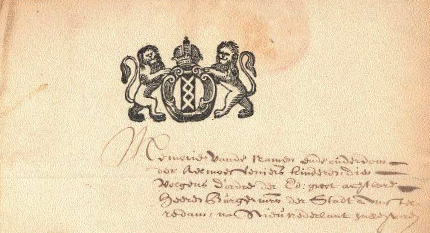This blog post is based on an article by James D. Folts, PhD, FGBS and Monica Gray, entitled "Dutch Records at the New York State Archives and the Current Digitization Project" in the most recent issue of the New York Researcher.
For much of its history, New York's Dutch roots were glossed over by scholars, who focused instead on the English colonization of early America. However, beginning in the latter half of the 20th Century, scholarship on New Netherland began to increase substantially, thanks in large part to the Dutch records held in the New York State Archives.
Now, access to these remarkably complete and deep historical documents is set to increase, as expert scholarship and digital technology are coming together to put more of these Dutch records online in multiple formats.
Today, we take a look at exactly what these records contain; why they are so significant; and some tips to get the most out of them.
Dutch Records: Uniquely Deep
The New York State Archives holds about 12,000 folio pages of manuscript text, spanning 1630-1664. According to Folts and Gray, "the Dutch records in the State Archives consist of minutes of proceedings of the director general and his council, correspondence, laws and ordinances, land patents and deeds." They concern a wide range of government functions, civil and criminal court cases, and relations with indigenous peoples such as the Mohawks and Mahicans.
These records offer more detail than later English records and contain a trove of information on the people of New Netherland, which will be of use to anyone researching this location and period - not just genealogists.
Nearly Destroyed Twice

from the Amsterdam almshouse
selected to go to New
Netherland circa 1655
Although these records have been in official custody since their creation, they have been nearly lost twice. In the 18th century, they were almost destroyed while they were stored in the hold of a British ship in New York during the Revolutionary War.
And in 1911, a fire destroyed the New York State Library in Albany, though most of the Dutch records were saved (some were damaged by the fire). Thankfully, the digitization projects will ensure their content is preserved for many years.
Thanks to assistance from the Dutch government and the Society of Daughters of Holland Dames, the Archives will be digitizing the remaining 9,500 pages that are not already digitized. Due to burn damage, many documents are extremely fragile, and the project requires the equipment and expertise of specialists.
Once complete, "researchers will be able to browse the State Archives' 'Digital Collections,' search to locate specific records and names, and download high-resolution images and English translations from the website at no cost."
Tips for Researchers
Folts and Gray point to numerous resources that will help researchers navigate this collection, one of which is E.B. O'Callaghan's Calendar of Historical Manuscripts in the Office of the Secretary of State: Dutch Manuscripts (Albany: 1866). This work includes a detailed listing of the documents, as well as a selective name index. Descriptions from this are being used to build the online database, which is great news - this source continues to be the best general guide to these records.
Genealogical researchers will also want to brush up on complex Dutch naming practices. Several valuable resources are listed in the article, including:
- Kenn Stryker-Rodda, "New Netherland Naming Systems and Customs," New York Genealogical and Biographical Record, vol. 126 (1995), no. 1: 35-45 (accessible to NYG&B members in our eLibrary)
- Henry B. Hoff, "Researching New York Dutch Families: A Checklist Approach," NYG&B Newsletter, vol. 7 (Summer 1996): 12-14 (available to NYG&B members as a research aid on our website)
The full article contains several more useful resources; an in-depth discussion of the records; and a useful table outlining digital images, Dutch transcriptions and published English translations available on the New Netherland Institute website.
